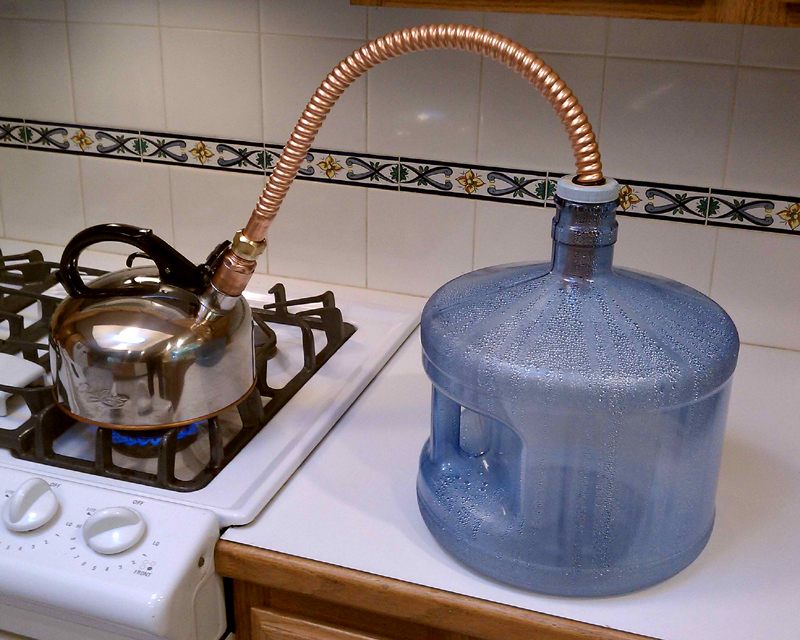Mark the Box Guy
Well-Known Member
DEBUNKED: see later posts.
I'm now using my coffee syphon to distill water for lye. For many years, university lecturers have revered the powerful impact that a proper coffee syphon can have on grading awful essays. Clarity and objectivity are preserved because these bizarre devices brew perfect coffee by 1) using distilled water, and 2) by ensuring that the water never rises above boiling. It's a fine cup of coffee. Logic dictates that it can also be used to distill water quickly and simply.
Now I'm using it to make soap.
My local market doesn't sell distilled water, and British water is notoriously hard, so I've used my syphon as a simple home distiller.
For the unfamiliar, the bottom chamber holds tap water. As the water simmers, the vapour travels up the tube into the upper chamber, where it cools and becomes liquid. The now-distilled water is held in the upper chamber by a spring-loaded cap/filter until the bottom chamber cools. The pressure difference between the two chambers equalises as the bottom chamber cools, releasing the spring and allowing the distilled water to flow back down through the tube. Rather than allowing the distilled water to mix with the undistilled water in the lower chamber, I simply remove the upper chamber and place it over a pitcher, which rapidly fills with my now distilled water.
Now I have distilled water for my lye.
The instructions are simple:
1) Fill bottom chamber and assemble the syphon.
2) Place the entire affair upon the stove and turn on the heat.
3) After several minutes you'll notice that the top chamber is filling.
4) You must work quickly once the top chamber is filled to remove it from the assembled device (a simple process requiring gloves or a kitchen towel) and place it over your pitcher.
5) Watch in amazement as the pressure equalises and the distilled water whooshes down the tube, ready for your lye.







I'm now using my coffee syphon to distill water for lye. For many years, university lecturers have revered the powerful impact that a proper coffee syphon can have on grading awful essays. Clarity and objectivity are preserved because these bizarre devices brew perfect coffee by 1) using distilled water, and 2) by ensuring that the water never rises above boiling. It's a fine cup of coffee. Logic dictates that it can also be used to distill water quickly and simply.
Now I'm using it to make soap.
My local market doesn't sell distilled water, and British water is notoriously hard, so I've used my syphon as a simple home distiller.
For the unfamiliar, the bottom chamber holds tap water. As the water simmers, the vapour travels up the tube into the upper chamber, where it cools and becomes liquid. The now-distilled water is held in the upper chamber by a spring-loaded cap/filter until the bottom chamber cools. The pressure difference between the two chambers equalises as the bottom chamber cools, releasing the spring and allowing the distilled water to flow back down through the tube. Rather than allowing the distilled water to mix with the undistilled water in the lower chamber, I simply remove the upper chamber and place it over a pitcher, which rapidly fills with my now distilled water.
Now I have distilled water for my lye.
The instructions are simple:
1) Fill bottom chamber and assemble the syphon.
2) Place the entire affair upon the stove and turn on the heat.
3) After several minutes you'll notice that the top chamber is filling.
4) You must work quickly once the top chamber is filled to remove it from the assembled device (a simple process requiring gloves or a kitchen towel) and place it over your pitcher.
5) Watch in amazement as the pressure equalises and the distilled water whooshes down the tube, ready for your lye.







Last edited:







